#irish spirituality
Text

Irish Celtic Energy Protection Mandala Shield
#irish#celtic#spirituality#energy#celtic spirit#irish spirituality#protection shield#zistaz#ai image
4 notes
·
View notes
Text
Integrating the Spirals: Brigid - Saint and Goddess
For anyone interested in Celtic Spirituality (either Christian or Pagan), I think you’ll love the YouTube videos I have for you! I learned a lot! If you would rather listen instead of read, play the audio (and there’s a few minutes of BONUS info on the audio this time too!):
YouTube video from The Ogham Grove
When we took our Sacred Celtic Journey to Ireland, England, and Scotland in 2019, we…

View On WordPress
#Brigid#Brigit#Capricorn#Celtic#Celtic Spirituality#goddess#Ireland#Irish Spirituality#Patricia McGivern#Rosslyn Castle#Sacred Celtic Journey#saint#Yew Tree
0 notes
Text
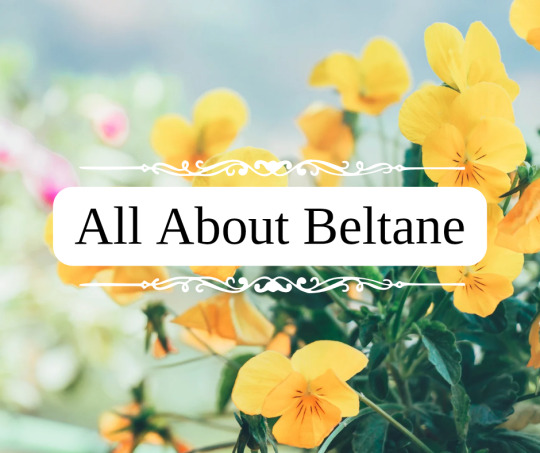
All About Beltane
Beltane, also known as Bealtaine in Irish, is a Gaelic holiday traditionally held on May 1st or the halfway point between the spring equinox and the summer solstice. It is believed to be named after the Celtic sun god Belenus. It was widely observed in Ireland, Scotland, and the Isle Of Man, and is one of the 4 major Celtic fire festivals. It is mentioned in even the earliest Irish literature and marked the beginning of summer and used as the marker to drive cattle into their summer pastures. Although public celebrations have mostly fallen out after the 20th century and many traditions have been mixed with other cultural holidays (such as the Roman holiday May Day), many Celtic Neopagans and Wiccans still celebrate, and many local traditions still continue, causing it to now get a cultural revival.
Traditionally, rituals were held to protect the livestock that moved pastures, along with crops, dairy products, and people, and to encourage growth. It was also important to appease the Aos Sí, or nature spirits/fairies, which were believed to be more active then.
According to early medieval texts in 908, druids would make two bonfires and drive cattle between them to protect them from disease. In the 18th and 19th centuries, bonfires continued to be an important part of the celebrations. Before the bonfires were lit, all hearth fires were put out, and then relit using the fire from the Beltane bonfires after the celebration.
Continuing into the 19th century, cattle were still driven over or between flames, or sometimes around the fires or made to leap over. The people themselves did as well for good luck and protection. Once the fires died down, people would dab themselves with the ashes and sprinkle them over their crops and livestock. Torches from the bonfires would also be brought home and carried around the home or boundaries, and also used to relight the hearth.
Food was also an important part of the Beltane festival, and usually included a feast of lamb, which, historically, was sacrificed. In 1769, it was written that a hot drink, called a caudle, made of eggs, butter, oatmeal, and milk was served, along with tossing a bit on the ground as an offering. A Beltane Bannock, a type of oatmeal cake, was also written to be important and had a few traditions around it.
In one tradition, the Beltane Bannock had nine knobs on it and each person would take the bannock and face the fire, proceeding to break off the knobs of bannock one at a time and tossing them behind their shoulder as an offering to the spirits for protection over their livestock and from predators (one for the cow, one for the sheep, one for the fox, etc). Afterwards, they would drink the caudle.
According to other 18th century writers, there was another Beltane Bannock tradition where the bannock would be cut into slices and one was marked with charcoal. The slices were then thrown into a bonnet and everyone would take one out while blindfolded. According to one writer, whoever pulled the marked bannock slice had to leap through the fire 3 times. According to another, the person would instead be pretend-thrown into the fire and for some time afterward people would talk about the person as if they were dead. This may have always been symbolic, or it may have been a tradition from a time where actual human sacrifice was used. This tradition was also near identical to May Day traditions that occurred in Wales and other parts of Europe, however.
Other traditions including flowers and plants were also observed, especially ones that evoked fire. Documents from the 19th century cite that yellow and white flowers, such as primrose, rowan, hawthorn, gorse, hazel, and marsh marigold was used and placed at doorways and windows. Sometimes they were strewn into garland, and other times they were made into bouquets, made into crosses, or fastened to them. They were also fastened to cows and milking/butter equipment.
Decorating a May Bush or May Bough was also a widespread tradition, and it usually consisted of a small tree or branch (typically hawthorn, rowan, holly, or sycamore) decorated with bright flowers, ribbons, candles, painted shells or egg shells from Easter, and more. In some traditions they also decorated it with gold and silver May Balls, which were hurling balls, that were then either given out to children or gifted to winners of a hurling match. It was also known as the only acceptable time to cut a thorn tree, as they were associated with fairies and may have also been a relic of worshipping tree spirits. It would either be decorated where it grew, or branches hung over windows, doors, roofs, and barns either inside or outside. Traditionally, it was the responsibility of the eldest of the house to decorate it.
The tree was usually left up until May 31st, but in some traditions it would be burned in the festival bonfire after singing and dancing around it. In Dublin and Belfast, May Bushes were brought into town and decorated by the whole neighborhood, with each neighborhood competing for the most beautiful bush. These competitions could also lead to neighborhoods attempting to steal others May Bushes, which eventually led to the May Bush being outlawed in Victorian times.
Appeasing the fairies was also a big part in Beltane celebrations, with many traditions revolving around offerings to the fairies and also warding them off, as there were many fears around them stealing dairy. One protection tradition was to leave 3 black coals under the butter churn. Another was to hang May Boughs on the milk pails. And yet another was to hang cattle tails in the barns. Flowers were also used to decorate the cattle's horns for good luck.
Farmers would also lead a procession around the boundaries of the farm and would "carry with them seeds of grain, implements of husbandry, the first well water, and the herb vervain (or rowan)", stopping at the four cardinal points of direction starting at the east, and performing rituals towards each direction at each stop. These processions were said to bring protection of their farm produce and encourage fertility. Some people also made the sign of the cross using milk on the backside of cattle for good luck.
As for fairy offerings, one tradition was to pour milk or leave food at places associated with the fairies such as "fairy trees". In Ireland, cattle were brought to "fairy forts" where a small amount of their blood was poured into the earth with prayers of the herd's safety. Sometimes, the blood would be left to dry and then be burnt.
Visiting holy wells was also a popular way to celebrate Beltane. Visitors would walk sunwise, moving from east to west, around the well while praying for health. They would then leave offerings of coins or cloth. The first water drawn from the well on Beltane was thought to be especially potent, and would bring good luck to the person who drew it.
Morning dew on Beltane was also thought to bring goodluck and health, and maidens would wash their face with it or roll in it at dawn or before sunrise on Beltane. It was also collected in a jar, left in sunlight, and then filtered. The dew was said to increase sexual attractiveness, maintain youthfulness, protect from sun damage, and ensure skin health during the ensuing year.
Modern day celebrations may vary from these more traditional festival activities, but many choose to incorporate or take inspiration from the traditions at least. Popular traditions still revolve around bonfires, feasts, decorating a May Bush, and focusing on protection and growth.
Beltane Associations
Colors - yellow, white, red, green
Food - lamb, milk and dairy, beef, bannocks, caudle, cakes
Animals - cattle, sheep, other herd animals
Items - primrose, rowan, hawthorn, gorse, hazel, marsh marigold, holly, sycamore, yellow and white flowers, flower garland, greenery, morning dew, dairy products
Crystals - citrine, fire agate, fire opal, carnelian, red and yellow jasper
Other - protection, fertility, good luck, fire, smoke, ash, sun, bonfires, farming
Ways To Celebrate
light a bonfire
jump over or dance around a bonfire
decorate a May Bush or May Bough
craft and hang flower garland
bake Beltane Bannocks
collect morning dew
create some caudle
ward and protect your home or property
leave offerings for the fairies
focus on protection, growth, and luck magic
enjoy time in the sun
have a feast
create a bouquet out of yellow and white flowers
visit a farm or petting zoo
#beltane#beltaine#bealtaine#celtic#gaelic#irish#scottish#pagan#witch#witchy#wicca#may day#magick#magic#magickal#grimoire#tradition#celebrate#bonfire#fire festival#witchcraft#spiritual#witchblr#witch community#paganism#pagan witch#celtic paganism#paganblr#about#dairy
79 notes
·
View notes
Text
Just to make something clear, Gaelic paganism (and folk practices) is not closed, you do not need any initiation and anyone telling you need "celtic" blood is just a racist. Anyone in the world from anywhere in the world can do it.
That doesn't mean you can pick and choose what words and figures you like from it, remove them from their original contexts, add nonsense information and claim it as fact (UPG should always be labeled as such especially if its in complete opposition to established lore). And then claim these terms and ideas actually have nothing to do with Ireland, The Isle of Mann and Highland Scotland. This is appropriation. Especially when this is all being spearheaded by English people in the 50s.
#irish paganism#irish mythology#celtic paganism#i promise thats the last one#i have gotten off my highhorse#paganism#so many people around the globe practice various froms of celtic spirituality in a way thats respectful but also personal and unique to the#it is possible people do it#there are some great blogs on tumblr even from the usa canada Argentina etc#tae#mine#also living culture is important
392 notes
·
View notes
Text










Screenshots i took while watching (are probably just frames of him breathing)
#movies#movie list#retro#letterboxd#al pacino#dog day afternoon#please boost#i'm like spiritually a cowboy#coquette#french#irish#my post#my crush#my man my man my man#hot celebs#celebrities#celebrity crush
64 notes
·
View notes
Text


Some detail shots of the Lorica of St. Patrick. This is now available as a 16" x 20" print on the Tamburn Bindery Etsy shop: https://tamburnbindery.etsy.com
#medieval#calligraphy#illumination#celtic#celtic art#stpatrick#irish#prayer#binding#knotwork#medieval manuscripts#medieval art#spirituality
75 notes
·
View notes
Quote
The uttering of the word reveals how each of us relentlessly creates. Everyone is an artist. Each person brings sound out of silence and coaxes the invisible to become visible.
John O’Donohue, Anam Cara: Spiritual Wisdom from the Celtic World
#lit#quotes#john o'donohue#anam cara spiritual wisdom from the celtic world#once upon a time in babel#sanctum#reading#irish lit#m#x
540 notes
·
View notes
Text
genuinely WHAT was hickey’s problem. he just…started acting like that. crazy ass
21 notes
·
View notes
Text
This is my first ogham reading in weeks, and I must say its auspicious message is very fitting as we approach Bealtaine, the Gaelic May Day festival. There's a tl;dr below.
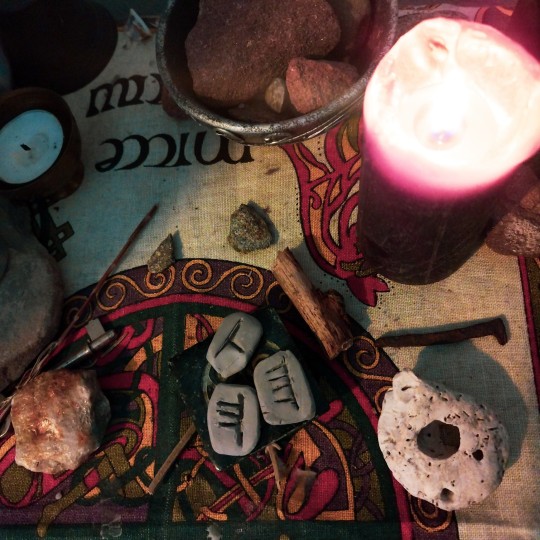
𝘉𝘦𝘵𝘩 (birch) indicates that it's time to blaze a new trail, to start down a new path, unhindered by the burdens of our past, be it unhelpful or harmful beliefs, behaviours or people. This Spring (Autumn if you are in the Southern hemisphere), we are called to walk as holy fools, light-footed and enamoured with life. We are to embark upon a quest for 𝘱𝘢𝘴𝘴𝘪𝘰𝘯. It's time to live truly unencumbered from the narratives and traumas that have been keeping us behind, both individiually and collectively. It's time to decolonise our minds, our bodies, and our societies. It's time to finally walk proud and free.
𝘛𝘪𝘯𝘯𝘦 (holly) in this reading warns us that we will be severely tried - mentally, spiritually and, for some of us, physically as well. But stick to your course, push through the fire, the smoke (and the CS gas) because if you do, your branches will bear blood-red berries - your iron tested and tempred by the battle-flames.
If we stick it through, if we make it to the end of the path, 𝘤𝘰𝘭𝘭 (hazel) indicates that the reward we will reap is no less than 𝘦𝘢𝘨𝘯𝘢í𝘰𝘤𝘩𝘵: wisdom, knowledge, inspiration, enlightment... Which in Gaelic tradition is not abstract, disconnected knowledge, but a deep knowing of ourselves and of the world around us - a grounded, embodied, holistic, 𝘤𝘢𝘳𝘯𝘢𝘭 enlightenment. Burn baby burn.
tl;dr
𝘉𝘦𝘵𝘩 urges us to set out on a new path, free and unburded
𝘛𝘪𝘯𝘯𝘦 warns us that we will be tried and tested - but don't give up. Don't you dare give up.
𝘊𝘰𝘭𝘭 promises us that, if we stick it through, we will earn 𝘦𝘢𝘨𝘯𝘢í𝘰𝘤𝘩𝘵 - embodied wisdom, a deep knowing of ourselves and of the world around us.
#ogham#Runes#divination#witchcraft#witches#witchblr#green witch#witch community#witch#irish paganism#pagan witch#paganism#paganblr#pagan blog#Witch diary#witch blog#Mine#Spirituality#Occult#tarot reading#tarot#altar#candle#irish
12 notes
·
View notes
Text
#celtic witch#pagan stuff#pagan witch#baby witch#beginner witch#witch#witches#witchy vibes#witch community#witchcraft#celtic paganism#pagan wicca#irish paganism#pagan#pagan blog#pagan community#paganism#paganlife#pagans of tumblr#pagansofinstagram#wicca#witchy shit#witch stuff#spirituality#witchy woman#traditional witchcraft#witchythings#witchyvibes#spiritualgrowth#spiritual awakening
11 notes
·
View notes
Note
do you mind me asking, was that recent post about losing faith by any chance about some kind of reconstructionist faith, like an irish polytheism? because i have some experience with dismantling that internally i suppose and it would be interesting if this is a pattern, if i wasn’t the only one... Love and solidarity in any case x
no, sorry. i grew up extremely christian in a uk evangelical tradition (with a big emphasis on social responsibility and justice, which is why it has remained so heavily entwined with my philosophies despite becoming agnostic in my late teens). it would be that protestant christian experience i would be mainly looking for, but i tend to find the dominant narratives about leaving evangelical churches are either joy at escaping the whole thing, or the survival of faith despite disillusionment in the religious institution, and neither of these narratives corresponds very closely with my own experiences
#answered#anonymous#(i have never had a religious or spiritual relationship with irish material#which is one reason my takes on it are often so disappointing to people#although I've got a lot more tactful about this over the years!)
12 notes
·
View notes
Text
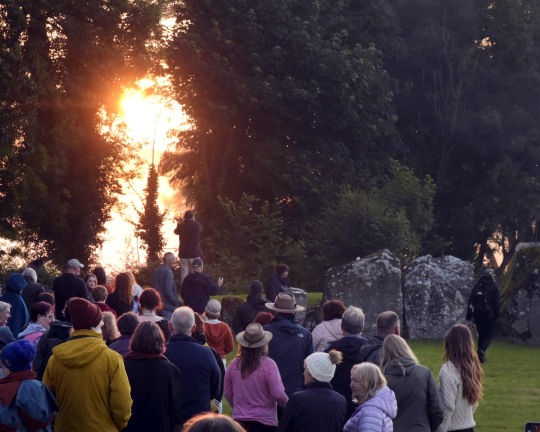
Summer Soltice in Grange Stone Circle near Lough Gur, Co Limerick on the 21st June 2023
#irish mythology#limerick#summer solstice#summer soul#druids#spiritualgrowth#spiritualhealing#spiritualguidance#spiritual knowledge#stone circle#newgrange#stonehedge#irish paganism
26 notes
·
View notes
Text
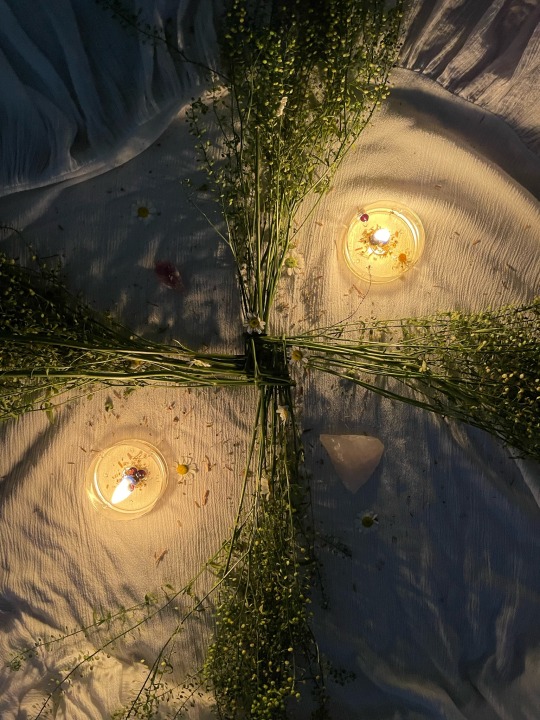

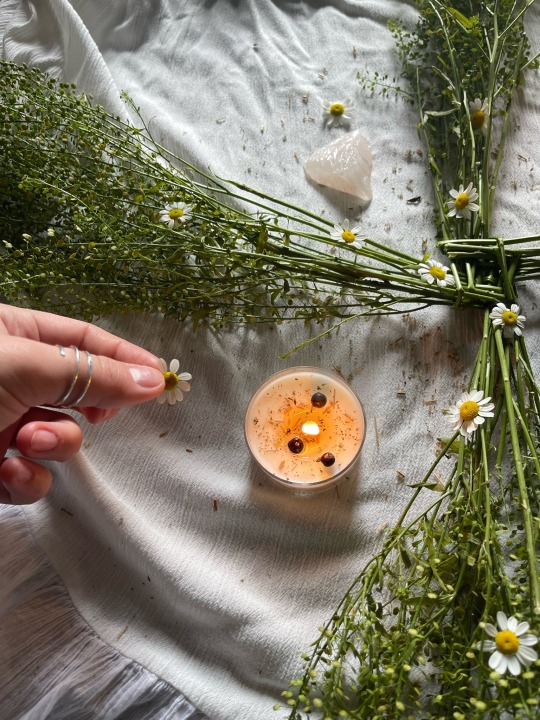

hello loves 🌸🌞🌿
Imbolc marks the midpoint between the winter solstice and the spring equinox. This festival comes from Pagan Celtic culture and celebrates new beginnings; the return of light and warmth as spring approaches.
"According to Irish legend, a lass named Bridget was very kind. She made unusual woven crosses tied with ribbons. She gave them as gifts, along with words of love, to whomever she met."
🤍🌸🌷🌞❄️
#imbolc#witchcraft#green witch#pinterest#mother nature#celtic#mother earth#i love you#divine feminine#sabbats#irish paganism#pagan holidays#pagan witch#paganism#folklore#irish history#spirituality#spiritualgrowth#flames#goddess#goddesses
14 notes
·
View notes
Text
I’m doing a study program with my group that involves 5 months of regular meditation and mental discipline practice and I’m curious to see what others think about it! Please rb with your definition of what meditation is!
#meditation#pagan#paganism#witch#witchcraft#poll#gaelic polytheism#irish polytheism#celtic paganism#recon#hellenic polytheism#helpol#gaelpol#hellenic paganism#norse polytheism#heathenry#germanic paganism#spiritual#kemetic#kemetic polytheism#slavic polytheism#gaulish polytheism#druidry#druid
22 notes
·
View notes
Text

Howdy folks! My asks are open!! If you have a question about death work, folk magic, my practice at all lmk! I also work as a costumer and actor in the horror / haunted house industry so lmk if you wanna ask about that. Or if you just wanna get to know me more! Lmk!

#ask a psychopomp#psychopomp#death witch#witchblr#death witchcraft#folk witchcraft#pagan#folk magic#folk practice#queer witch#witchcraft#baby witch#baby witch questions#beginner witch#intermediate witch#experienced witch#spiritual practitioner#practitioner#Irish folk magic#Irish American folk magic#irish paganism#gealic polytheism#ask me anything#witchy questions#Magic questions#baneful magic#protection magic#scare actor#folk witch#witch
3 notes
·
View notes